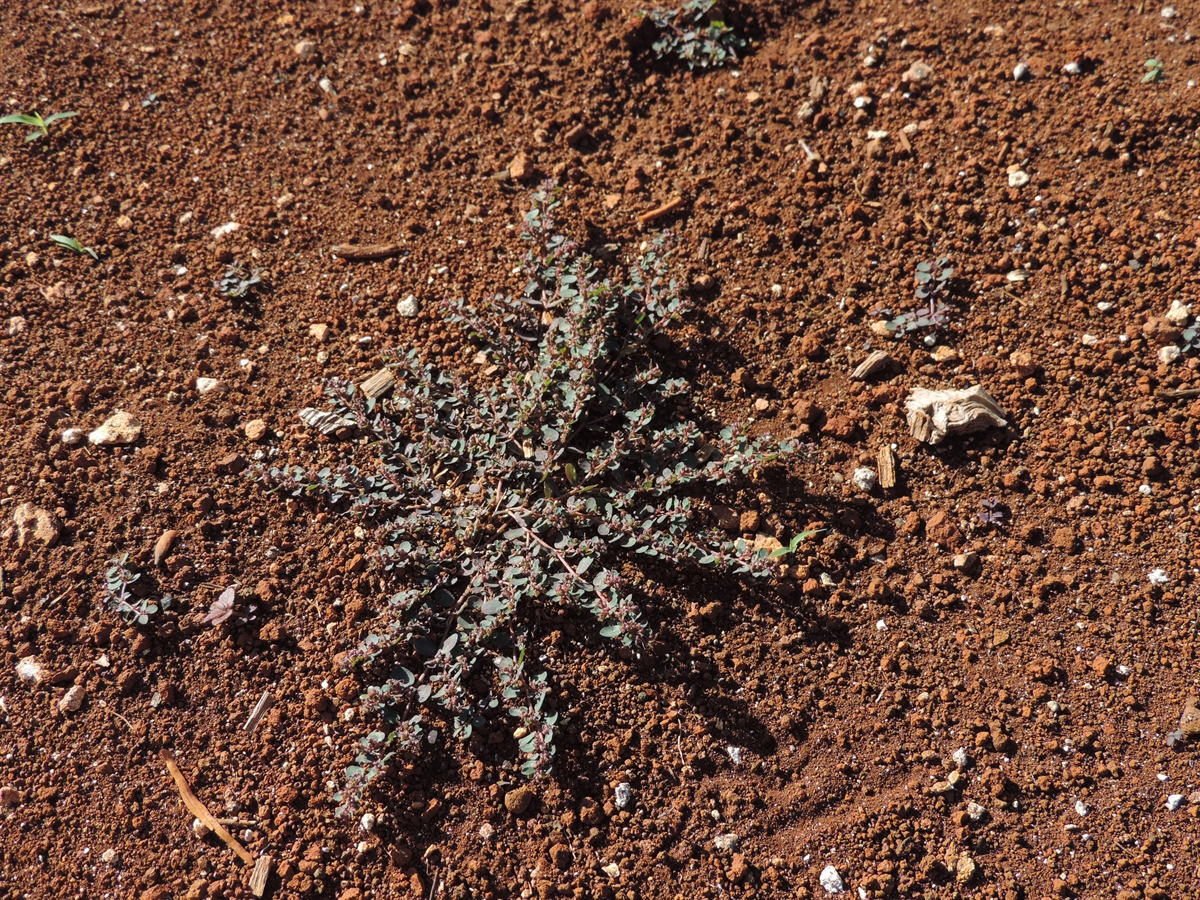Habit: Euphorbia prostrata grows as a prostrate, glabrous, annual herb up to 20 cm in length. The leaves are arranged oppositely, up to 1 cm in length, elliptic to obovate, pellucid punctate with a serrulate leaf margin and an acuminate leaf apex. At the base of the petiole are short lived stipules. The vegetation is can be purplish red.
The incomplete, imperfect, monoecious, actinomorphic, are arranged in pubescent cyathia in clusters in leaf axils. There are 5 white glands on the edge of the cyathia. There is no calyx or corolla. Staminate flowers are reduced to a single stamen. Carpellate flowers are reduced to a single superior carpel, each with 3 locules and numerous seeds. The fruit is a pubescent along the ridges capsule at maturity that splits along 3 suture lines.
Habitat: Euphorbia prostrata grows in Human Altered environments (yards, abandoned fields, nurseries).
Distribution: Euphorbia prostrata occurs throughout the island groupings of the Lucayan Archipelago, the Caribbean region, North, Central and South America. It has naturalized across parts of the rest of tropical and subtropical regions of the world.
Medicinal/Cultural/Economic usage: Euphorbia prostrata is not known to be used medicinally in the Lucayan Archipelago. It has been used medicinally in other parts of the Caribbean region to treat gastrointestinal issues, colds and flu, and obstetric remedies.
All parts of the species are extremely toxic and should not be ingested!!


